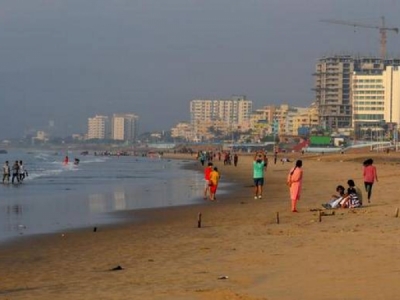
Posted on March 19, 2020
Subdued tidal waves also contribute to the phenomenon: expert
The most frequented area in the city — the beachfront area — has increased significantly, thanks to the nourishment of eroded beaches undertaken by the Visakhapatnam Port Trust and the lull in the activity of tidal waves.
The phenomenon, which has brought cheers among the locals as well as the tourists, is expected to last for sometime. “Till onset of southwest monsoon or occurrence of a system in the Bay of Bengal the extended beachfront will continue. This is mainly because low tidal wave activity leading to less taking away of sand into the sea,” V.S.N. Murthy, former officiating director of National Institute of Oceanography, told The Hindu on Tuesday.
The VPT has engaged Dredging Corporation of India Ltd (DCIL) for the nourishment project after entering into an agreement with it last year for a three-year contract at a cost of Rs. 39.96 crore. Beach nourishment is an annual project for the port. It is undertaken in February-March when the climate is very conducive for nourishment.
Under the present project, two lakh cubic metres of sand will be extracted from the ‘Sand Trap’ between the Dolphin’s Nose and the South Breakwater. Nourishment is undertaken since 1976, the construction of Outer Harbour.
Sand Trap extended over three to four km is created to stock sand for use whenever is required. However, formation of frequent systems in the Bay have led to declining sand deposits and the total accumulation has come down from four lakh cubic metres by half over last few years.
NIO Visakhapatnam Regional Centre in-charge G.P.S. Murthy said a combination of factors like low velocity in wind speed, reduced pace of winds and nourishment of severely eroded beaches near YMCA and Kali Temple have led to increase in beachfront area.
He said slow wave action would lead to receding of sand that led to creation of wide stretch beachfront in the coming months. The authorities gave up proposal for installation of tubewells, underwater dykes and geosynthetic mesh following recommendation by an experts committee after severe beach erosion led to sea surge a few years ago.
Source: thehindu





